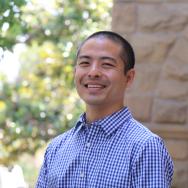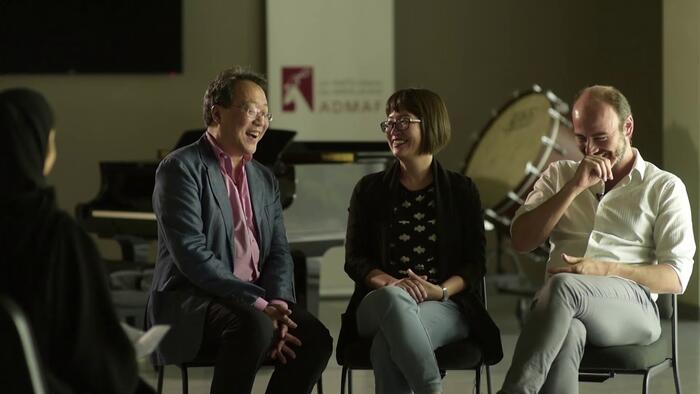Rediscovering Mottainai: My Experience with the Reischauer Scholars Program
ŌĆ£Be careful with the scissors,ŌĆØ my grandma would remind me once more. The blistering heat of the Tokyo summer radiated through the living room mercilessly, temporarily distracting me from my task at hand. My eight-year-old hands, glistening with sweat, carefully cut through an empty plastic bottle. I would neatly cut through the grooves of the water bottle, making sure not to leave any sharp ridges, per my grandmaŌĆÖs instructions. After some additional modifications of my own, the mini-trash can was complete. This would be used in various places in my grandparentsŌĆÖ house from the bathroom to the kitchen sink, providing the plastic bottle with years of repurposed life. When I ask my grandma why she wonŌĆÖt simply buy a new plastic container for the same purpose, she would predictably respond: ŌĆ£Mottainai karaŌĆØ (translation: Because that would be mottainai).
This word, mottainai, which most closely translates to ŌĆ£wasteful,ŌĆØ is a staple of Japanese culture. It is commonly used to express oneŌĆÖs sentiment of wastefulness. It can be used in various contexts from feeling wasteful about food being thrown away to the feeling of regret after wasting time. Awareness of mottainai has been a constant throughout my entire life. I recall my favorite childhood bedtime story being Mottainai BaasanŌĆöthe story of a baasan, or grandma, who found creative ways to reduce and repurpose waste. Her simple yet riveting creativity ingrained into me an instinct of reducing waste from a young age. I would stuff old shirts into my pillow case to adjust my pillow height; tape pencils sharpened down to less than an inch to the back of a pen to be able to use them to the very end; water down almost empty tomato sauce cans and shake it with the lid closed to be able to use every last bit of the sauceŌĆöall were ideas inspired by Mottainai Baasan.
While I had always taken mottainai for granted, I never questioned why Japan as a society practices mottainai so diligently. Through StanfordŌĆÖs Reischauer Scholars Program (RSP), I was able to explore this familiar concept of mottainai through an academic and historical lens, recontextualizing a mindset I grew up with into what I now realize is a combination of Shinto principles and the result of JapanŌĆÖs efforts to reconstruct the country following their loss in World War II.
This collective awareness of and desire for self-betterment and respect for one another casted mottainai in a brand-new light. Such realizations allow me to appreciate my familyŌĆÖs culture in a way that ties into grounded historical events.
In particular, books such as Edwin O. Reischauer and the American Discovery of Japan by George Packard explained questions I had long wondered about, specifically regarding key differences in Japanese and Korean culture. As it turns out, America learned from certain setbacks they faced when Westernizing Japan and reshaped its approach in Korea, resulting in many of the differences between Japanese and Korean culture we observe today.
Furthermore, having participated in public Japanese education for over a decade, the opportunity to study Japan under an American lens was incredibly insightful. Whether it be biases I began to realize between Japanese and American teachings or the different approaches to introducing topics involving both countries, connecting different perspectives began to feel like a four-dimensional puzzle spanning time and cultures. The opportunity to immediately discuss my thoughts with other students in RSP culminated into multiple ŌĆ£aha!ŌĆØ moments that have stuck with me since. These thoughtful discussions with my peers stood out as a central part of my experience in the program. For additional context, my experience with RSP coincided with the early stages of the COVID-19 pandemic. Despite such distractions, RSP allowed me to learn in an engaging and captivating manner. Since the program was originally designed to be in an online setting long before COVID, a strong sense of community was already baked into the experience, and I was able to learn directly from my classmates around the world in an efficient and organized manner.
The opportunity to learn the context and history behind various aspects of Japanese culture that I grew up with and previously took for granted was a priceless experience. Being able to understand why certain cultural quirks exist as well as how they came to be and in what ways they impact modern Japanese society renewed my outlook while deepening my appreciation for Japan.
Reischauer Scholars Program
Read More
The following reflection is a guest post written by Seiji Yang, a 2020 alumnus of the Reischauer Scholars Program, which will begin accepting student applications on September 5, 2022.

 FSI researchers consider international development from a variety of angles. They analyze ideas such as how public action and good governance are cornerstones of economic prosperity in Mexico and how investments in high school education will improve ChinaŌĆÖs economy.
FSI researchers consider international development from a variety of angles. They analyze ideas such as how public action and good governance are cornerstones of economic prosperity in Mexico and how investments in high school education will improve ChinaŌĆÖs economy.




















 Silkroad Ensemble Musicians Yo-Yo Ma (cello), Haruka Fujii (percussion), and Kinan Azmeh (clarinet); photo courtesy Silkroad
Silkroad Ensemble Musicians Yo-Yo Ma (cello), Haruka Fujii (percussion), and Kinan Azmeh (clarinet); photo courtesy Silkroad



 Ambassador Rahm Emanuel; courtesy U.S. Embassy Tokyo
Ambassador Rahm Emanuel; courtesy U.S. Embassy Tokyo






